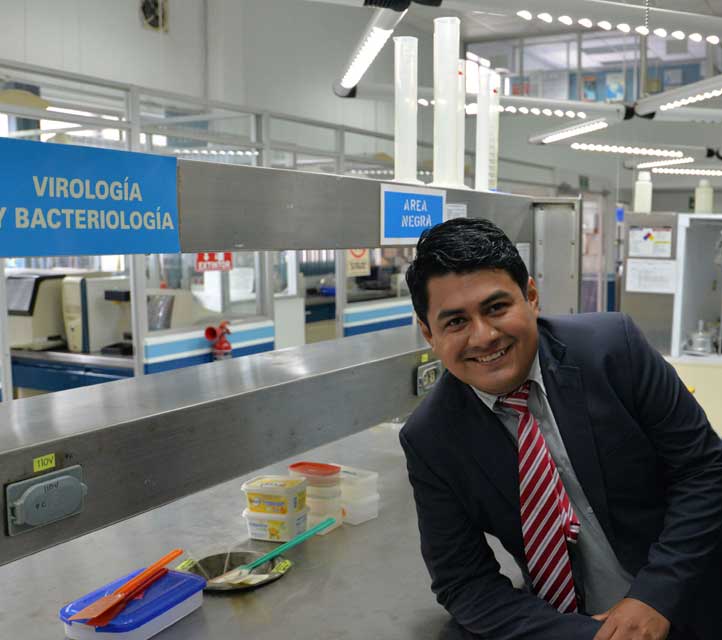Estudiante,
Doctorado en Ecología y Biotecnología,
Instituto de Biotecnología y Ecología Aplicada,
Universidad Veracruzana,
Xalapa, Ver.
Marzo 2016
Proyecto de tesis doctoral: Diversidad de Fusarium en relación con el cultivo de vainilla, con especial atención en Fusarium oxysporum f. sp. vanillae
Director: Dr. Mauricio Luna Rodríguez, INBIOTECA, UV.
Aceptado:
Flores de la Rosa F.R, E. De Luna, J. Adame-Garcia, L.G. Iglesias-Abreu & M. Luna-Rodriguez. 2018. Phylogenetic Position and Nucleotide Diversity of Fusarium oxysporum f. sp. vanillae worldwide based on Translation Elongation Factor 1α sequences. PLANT PATHOLOGY. doi: http://onlinelibrary.wiley.com/doi/10.1111/ppa.12847/full
Abstract. Fusarium oxysporum f. sp. vanillae is considered the most important fungus affecting vanilla crops around the world. This pathogen causes rot on vanilla roots and stems decreasing productive potentiality. This disease has been reported in the main producer´s regions in Madagascar, Indonesia, Reunion Island and Mexico. Previous studies showed that the ability to infect vanilla plants is a polyphyletic trait among strains of Fusarium oxysporum Species Complex (FOSC). The aim of this work is to test the hypothesis of the monophyletic origin of a wider sample of strains of Fusarium oxysporum f. sp. vanillae infecting Mexican vanilla and estimate nucleotide diversity of pathogen strains from the main vanilla producer countries. We assembled sequence data of Translation Elongation Factor (TEF) 1a gene from 106 strains, among which 4 are out-groups, 57 are exemplars to represent diversity within Fusarium oxysporum, 29 are previously available sequences from strains with the ability to infect vanilla worldwide, and 16 are new sequences from samples of Mexican Fusarium oxysporum f. sp. vanillae. Nucleotide variation in sequences from Mexico, Africa and Asia was examined for within and among population genetic diversity of Fusarium oxysporum f. sp. vanillae based on indexes of nucleotide diversity. The strict consensus tree from parsimony phylogenetic analyses suggests that some Mexican strains of Fusarium oxysporum f. sp. vanillae belong in two well-supported clades, mixed with strains from Madagascar, Indonesia, Reunion Island and Comoros. The phylogenetic position of other Indonesian and Mexican strains is unresolved. Estimations of nucleotide diversity showed that the population from Mexico is most genetically diverse than the other three populations from Madagascar, Indonesia, and Reunion Island. Our results support a polyphyletic origin of vanilla infecting strains of F. oxysporum worldwide, and also reject the proposition that Mexican strains have a single origin. The phylogenetic optimizations over the strict consensus tree of the ability to infect vanilla plants suggest that pathogenetic strains around the world are the product of multiple shifts of pathogenesis and dispersion events.En las noticias (Oct 2016):
"Especialistas UV y de Estados Unidos indagan origen del hongo de la vainilla."Por Paola Cortés Pérez, PrensaUV



No hay comentarios.:
Publicar un comentario